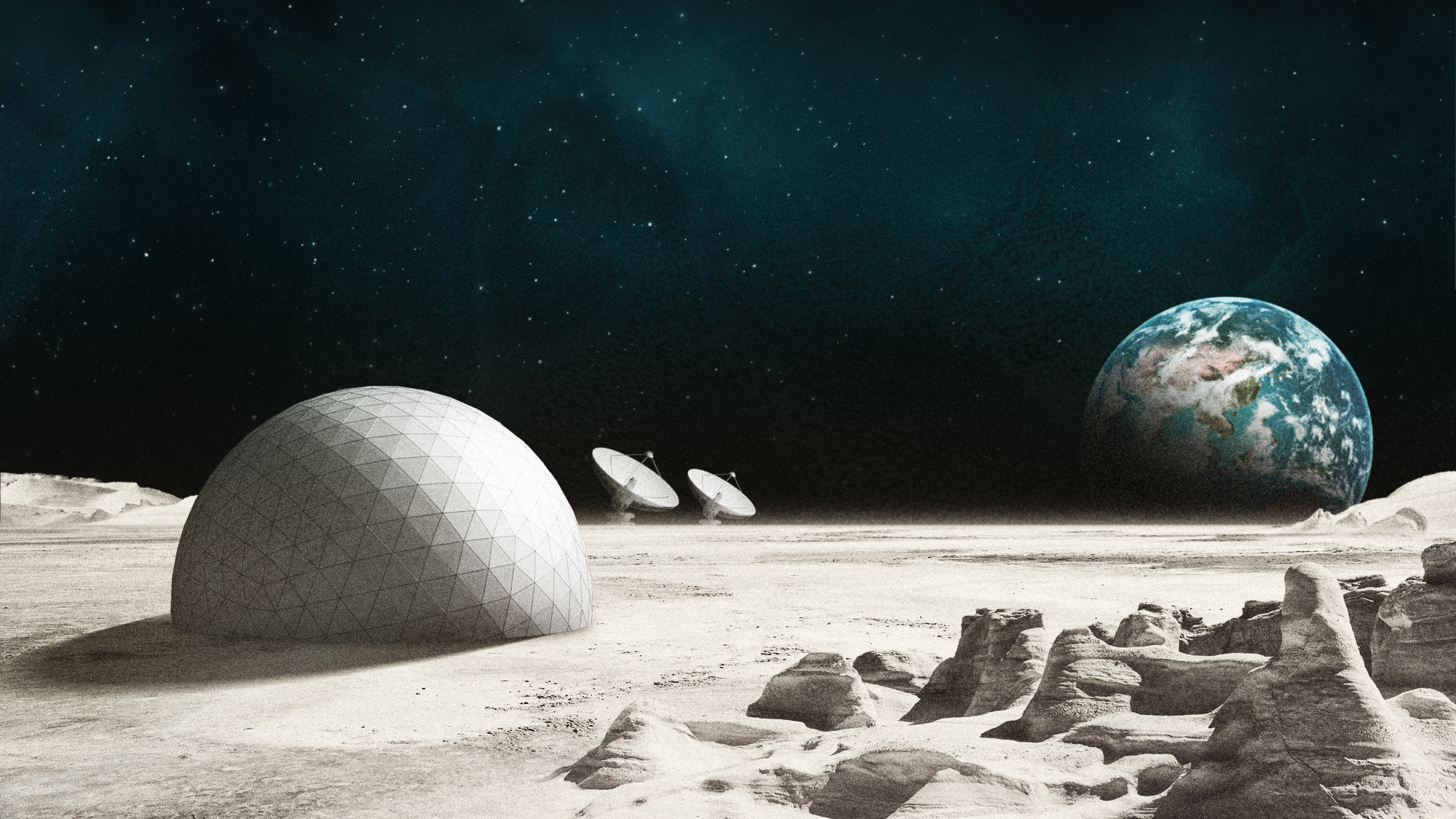People could be living in lunar 'houses' by 2040, says Nasa

What would a colony on the Moon look like?
People could be living in lunar 'houses' by 2040, says Nasa
Newsletter Sign Up
One entrepreneur hopes to have a rudimentary hut built on the Moon by 2031.
Image credit: Illustration by Stephen Kelly / Getty Images
By Chas Newkey-Burden, The Week UK published 11 July 2024
Plans for Lunar Colonization
A businessman has revealed plans to colonise the Moon by 2063 and transform humanity into a "multi-planet species". Argentinian-American entrepreneur Guillermo Söhnlein said we would "begin to see ourselves not just as citizens of one country or another, but as inhabitants of Mearth", the name coined for a hypothetical Earth-Moon civilisation, said The Independent.
Ambitions of this sort have been around for a while: in the 1980s "The Usborne Book of the Future" forecast a city on the Moon, where people would work at consoles in vast domes connected by pressurised underground passageways.
Subscribe to The Week
Escape your echo chamber. Get the facts behind the news, plus analysis from multiple perspectives.
SUBSCRIBE & SAVE
Sign up for The Week's Free Newsletters. From our morning news briefing to a weekly Good News Newsletter, get the best of The Week delivered directly to your inbox.
Future Moon Settlements
Söhnlein, co-founder of the Titan submersible company, hopes to have a basic hut on the Moon's surface by 2031, allowing up to eight people to begin living there. By 2046, there would be a "mini-city", with space for 578 people. And then by 2063, with the trade flow with the Earth "normalised", the Moon will "become a thriving community" of 1,644 people, living and working in an environment "once thought to be uninhabitable".
Nasa has a broadly similar timeline. The US space agency believes that by 2040, Americans will "build houses on the Moon", said The New York Times, "ones that can be used not just by astronauts but ordinary civilians as well".
To make this happen, the agency would "blast a 3D printer up to the Moon" and then build structures out of a "specialised lunar concrete created from the rock chips, mineral fragments and dust" that "sits on the top layer of the moon's cratered surface".
If you're already wondering about getting your hands on a lunar bolthole, hold your horses because it's "too early to consider the market value of homes on the Moon", or "even how an ownership structure for lunar habitats could look". The more immediate needs would be breathable air, water, food, pressurised shelter and power. It would be "ideal" to get as much of these resources as possible from the Moon itself, because the cost of shipping material from Earth is "unbelievable", said How Stuff Works – about $50,000 per pound.
Technological Advancements
Aidan Cowley, scientific adviser at Esa's European Astronaut Centre, told the BBC that rather than bringing "bulky" and "expensive" habitats from Earth, he favours "living off the land" as much as possible. Although the Moon has no "vegetation, food or running water", it "does have some mineral resources, sunlight and water ice". Experiments in the International Space Station have shown we can grow plants in microgravity, and the University of Florida recently discovered that cress can be grown in lunar soil.
Nokia is testing the Moon's first 4G network, sending out a rover "to see if it can pick a wireless signal", said The Telegraph and lunar Wi-Fi is "just around the corner". Astronauts may occupy "subterranean lava tubes" that "snake beneath the surface" of the Moon, offering a "good shelter against space radiation".
Future of Lunar Colonization
One "overlooked" dimension of a permanent Moon settlement is what future space colonists might sound like, said Live Science. When people with different accents "become isolated from the rest of the world", the "entire group will start to mimic one another, creating a brand-new blend".
What’s Next?
Contracts have already been signed between space agencies and industry for "long-term lunar infrastructure missions", said the BBC. Communications and navigation services are being devised, and plans drawn up for water extraction from lunar ice and electricity from solar power plants. But "wrapped into Nasa's push to build on the Moon" is a "longer and even more far-flung goal: getting to Mars", said The New York Times.
Author Information
Chas Newkey-Burden has been part of The Week Digital team for more than a decade and a journalist for 25 years...
Latest Recommendations
You Might Also Like
TheWeek
SUBSCRIBE & SAVE Less than $3 per week
The Explainer
- Talking Points
- The Week Recommends
- Newsletters
- Cartoons
- From the Magazine
- The Week Junior
More
- Politics
- World News
- Business
- Health
- Science
- Food & Drink
- Travel
- Culture
- History
- Personal Finance
- Puzzles
- Photos
- All Categories
Home
Science
Today's big question
